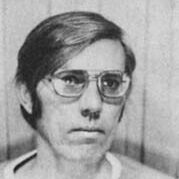Kenneth Crowe
- 1975

Fellowship Title:
- The Movement and Investment of Foreign Funds into the U.S.
Fellowship Year:
- 1975
Filling The American Gap
The views expressed by the author in this newsletter are not necessarily the views of the Foundation. (THE CONTEXT: Foreign investment in the United States is burgeoning, while public consciousness of this perennial phenomenon has been raised by the prospect of Middle Eastern oil money buying large pieces of American corporations and real estate. The traditional investors in the U.S. have been the Europeans, but in recent years, nouveau investors…the Japanese, the Arabs, the Iranians…have appeared on the American horizon. An understanding of the impact of foreign money and foreign ownership is obscured by a lack of knowledge. The following article outlines the entry of a Dutch holding company into the U.S.) “Tis the part of a wise man to keep himself today for tomorrow, and not venture all his eggs in one basket.” — Miguel de Cervantes in “Don Quixote de la Mancha” ROTTERDAM — A colloquial American version of Cervantes words would be: “Don’t put your eggs all in one basket.” I began to feel this must be the corporate motto of Pakhoed
A Pan-Arab Investment
The views expressed by the author in this newsletter are not necessarily the views of the Foundation. (THE CONTEXT: Foreign investment in the United States is burgeoning, while public consciousness of this perennial phenomenon has been raised by the prospect of Middle Eastern oil money buying large pieces of American corporations and real estate. The traditional investors in the U.S. have been the Europeans, but in recent years, nouveau investors…the Japanese, the Arabs, the Iranians…have appeared on the American horizon. An understanding of the impact of foreign money and foreign ownership is obscured by a lack of knowledge. The following article deals with a direct investment by almost every Arab government in a new bank in New York.) The opening of the unique UBAF (Union de Banques Arabes et Francaises) Arab American Bank on New York City’s Park Avenue this June represents the first thrust of Pan-Arab investment into the United States. The new bank is an independent satellite of the UBAF Group of banks, whose physical communications center is Paris, but whose philosophy spins
The Shah’s American Baby
The views expressed by the author in this newsletter are not necessarily the views of the Foundation. (THE CONTEXT: Foreign investment in the United States is burgeoning, while public consciousness of this perennial phenomenon has been raised by the prospect of Middle Eastern oil money buying large pieces of American corporations and real estate. The traditional investors in the U.S. have been the Europeans, but in recent years, nouveau investors…the Japanese, the Arabs, the Iranians…have appeared on the American horizon. An understanding of the impact of foreign money and foreign ownership is obscured by a lack of knowledge. The following article deals with an unusual investment by the Shah of Iran.) The Pahlavi Foundation’s high rise building, under construction at 650 Fifth Avenue in New York City, would seem at first glance to be a symbolic investment in America, since the Iranians starting with a fanfare of great intentions for their bundles of petrodollars have invested so little directly into the United States. But there is a deeper significance to the Pahlavi Building, or the
The Dichotomy of Saudi Arabia
The views expressed by the author in this newsletter are not necessarily the views of the Foundation. (THE CONTEXT: Foreign investment in the United States is burgeoning, while public consciousness of this perennial phenomenon has been raised by the prospect of Middle Eastern oil money buying large pieces of American corporations and real estate. The traditional investors in the U.S. have been the Europeans, but in recent years, nouveau investors…the Japanese, the Arabs, the Iranians…have appeared on the American horizon. An understanding of the impact of foreign money and foreign ownership is obscured by a lack of knowledge. Saudi Arabian money has been trickling into the States, yet it has the potential of a tidal wave. This article deals with the clogs in the money stream and Saudi attitudes towards investment in the U.S.) JEDDAH, SAUDI ARABIA — Tarek Bin Laden is the personification of the dichotomy of Saudi Arabia: conservatism and change mingle in his being. Sitting on a camp chair, snug against the edge of an open shaft — a plunge of four
Kutayba Alghanim of Kuwait
The views expressed by the author in this newsletter are not necessarily the views of the Foundation. (THE CONTEXT: Foreign investment in the United States is burgeoning, while oublic consciousness of this perennial phenomenon has been raised by the prospect of Middle Eastern oil money buying large pieces of American corporations and real estate. The traditional investors in the U.S. have been the Europeans, but in recent years, nouveau investors…the Japanese, the Arabs, the Iranians…have appeared on the American horizon. An understanding of the impact of foreign money and foreign ownership is obscured by a lack of knowledge. The following article describes the concentrated evolution of a traditional Arab family trading company into the early stages of a growth-oriented multi-national corporation.) Kutayba Alghanim is a man of pragmatic ideas who has skillfully molded a large Kuwaiti family trading company into a modern corporation which he is currently reshaping into a multi-national business complex. The new international Alghanim organization is something unique — at once rooted in the history of Kuwait and now grasping the opportunity of the
